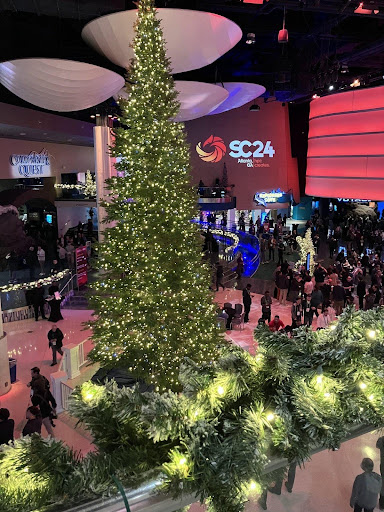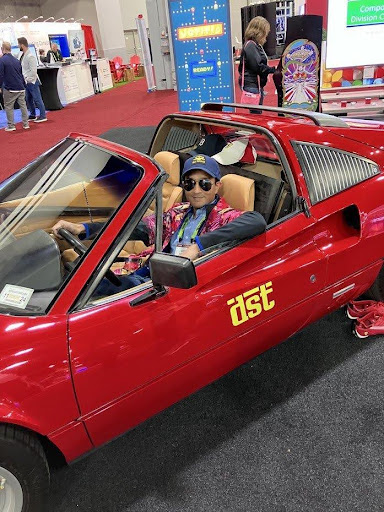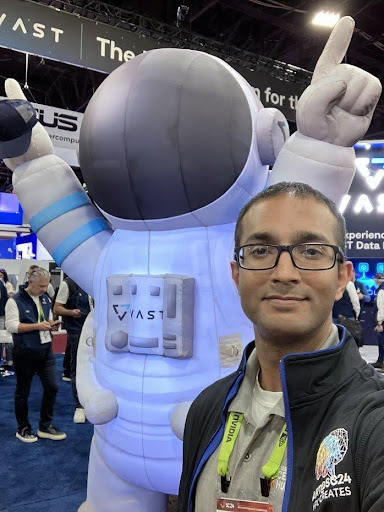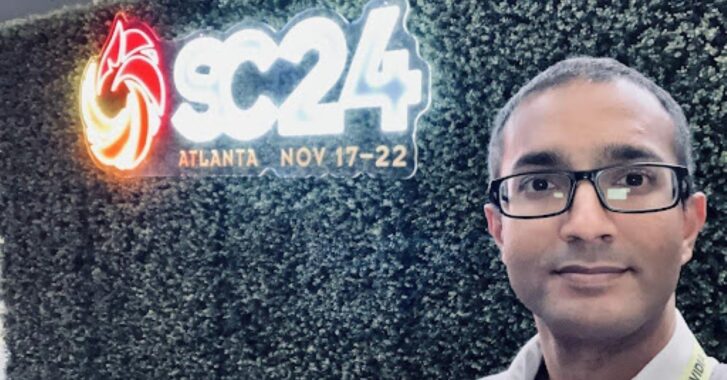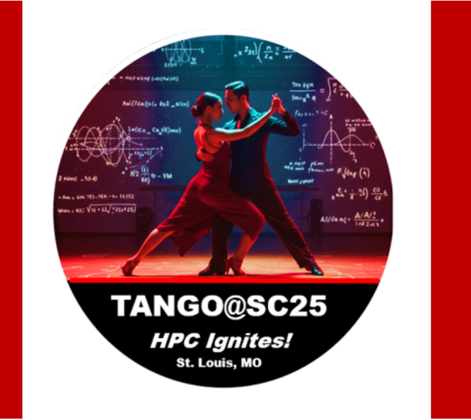By: Vijay Shankar, Director of Bioinformatics and Statistics, Clemson Center for Human Genetics
I have spent most of my academic career on the user side of high-performance computing (HPC). It is only in the last five years that I have begun to understand what it means to serve on the administrator side of HPC. I, like a few others I met at the ART@SC24 pre-conference workshop and the SC24 conference proper, have walked an atypical path toward the HPC world. My day job is that of a Computational Biologist and Core Director. What I do in between the lulls of academic responsibilities is administer a 40-node DELL EMC cluster owned by the Center for Human Genetics with my core team. Our cluster serves the research needs of approximately 120 users in the field of genetics and genomics at Clemson University. When I began this journey back in 2019, I knew next to nothing about how to administer a cluster. It was just me and a compendium of online tutorials, articles and left-over notes from the DELL deployment team. Over time, I have come to appreciate the profound empathy, expertise and support that exists in the HPC community of like-minded and curious individuals.
And what better way is there to meet with peers and learn together than to attend an international HPC conference? And so, here I was, attending my very first SC in Atlanta, Georgia! I was very fortunate. Not only was this location ideal (I live a mere 200 miles away), but my attendance was fully funded by the generous travel award from NSF through STEM-Trek and Texas A&M University! Many thanks to Elizabeth Leake and her team for allowing me the opportunity to attend SC24 in Atlanta, Georgia!
The pre-conference workshop on the 15th of November was a jam-packed day of thought-provoking experiences, meetings and tours. Especially noteworthy were the talks by Aaron Jezghani (Georgia Tech), Mike Navicki (Mississippi State University) and Suresh Marru (Georgia Tech). Aaron’s background and his path to SysAdmin was very similar to mine in that we both started our journey as scientists and academicians. We had insightful conversations in between the other talks and meetings about user-oriented perspectives and administration. Mike and I conversed about the challenges that come with administering a cluster with constantly evolving constraints in academic settings. Suresh and I connected on matters regarding cluster and storage architecture. I also enjoyed Thad Starner’s talk on his impactful sign language vision recognition project. But what I enjoyed even more was his personality. Thad’s a really interesting guy!
Day two of the pre-conference workshop was at the SC24 venue. We got our snazzy ART@SC24 jackets! We knew these jackets looked great because other conference attendees asked about them when we wandered through the vendor floor later in the week. Of interest on day two were talks by Spencer Bryngelson (Georgia Tech) on Competitive and Physics-Informed Neural Networks and Dhabaleswar (DK) Panda (Ohio State University) on ICICLE. Later that day, DK suggested I visit his poster on end-to-end DL-based analysis workflow HARVEST 2.0 (which of course I did). We finished our day with a rustic dinner at the anachronistic and comically brutal Medieval Times Tournament Arena.
I spent the next two days developing my itinerary for the rest of the conference in my room. I also took this opportunity to catch up on my academic duties. I was back at the venue on the 19th for the keynote address by Nicki Fox (NASA). Her talk on how HPC fuels the latest advancements in space research at NASA was exceptional and inspiring. As an amateur astrophotographer, I have loved all things interstellar and space for as long as I can remember. So, this was a rare convergence of topics that I am passionate about.
I made sure to attend the ACM Gordon Bell Finalist talk on Multivariate Genome-Wide Association Studies using Mixed-Precision Kernel Ridge Regression by the KAUST team because this was highly relevant to my research goals at Clemson. The field of genetics is moving toward personalized medicine through high resolution prediction of phenotype (disease risk) from genotype (DNA) through big data analytics. The insight from the KAUST team’s research was a methodological advancement that we would like to implement in our own research programs for accelerated predictions at population scale.
Another event that I did not want to miss was the Birds of a Feather session on Open OnDemand by Ohio Supercomputing Center. We use Open OnDemand on our cluster for interactive scientific computing and I wanted to ensure that I was keeping up with the latest updates and advancements that were being introduced. The roadmap that was provided for future iterations was especially useful. I also wanted to ensure that the development team behind Open OnDemand heard some of the feature requests from their userbase that have not been previously addressed. They addressed our requests during their Q & A session.
The other Birds of a Feather session on Operation Data Analytics was just as insightful as Open OnDemand. I was able to join the ODA’s SC attendee mailing group to get real-time updates on some of the requests the conference attendees had brought up during our session. Our cluster has reached a threshold where active ODA routines are a requirement. The session focused on paradigms for automated monitoring and logging of performance, access and security.
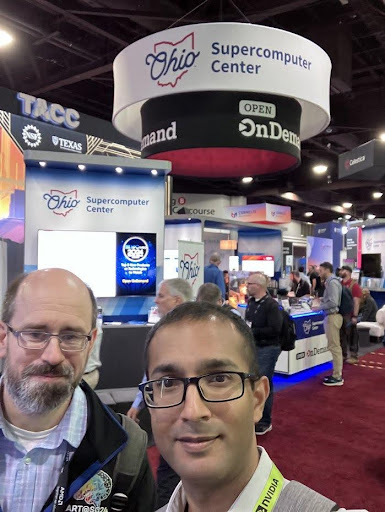
When possible, John Poole (from my Clemson team) and I tried to attend as many of the SC theater sessions at the HPC Illumination Pavilion as possible when our fellow STEM-Trek attendees were presenting their work and research. During our brief meetings on the vendor floor with the other STEM-Trek attendees, we learnt of some wonderful news! Congratulations to Elizabeth Leake and STEM-Trek on the HPCwire’s Workforce Diversity & Inclusion Leadership Reader’s Choice Award and to Bryan Johnston on the Outstanding Leadership in HPC Reader’s Choice Award.
We found enough time between the conference sessions to roam through the vendor floor to meet with key vendors and learn about the latest hardware and software advancements in HPC. Worthy of note were our meetings with VAST, Run:AI, Seagate, Western Digital, OSNexus and DST. We are in conversation with many of these vendors now to purchase their hardware and services to improve the usability and functionality of our cluster.
One of the goals I had at SC24 was to meet with data storage hardware and service vendors (like VAST, Seagate and Western Digital). With not one but two state-of-the-art high-throughput DNA sequencers at our center running nearly every week, we have reached a data acquisition rate that I didn’t expect to see for another two years. In addition, parts of our current storage architecture have reached its end-of-support period and are due for a replacement. The conference timing could not have been more perfect!
The SC24 Technical Program Reception at the Georgia Aquarium was a classy finishing touch to a feature-rich week in Atlanta. We got to unwind, decompress and most importantly rest our legs while gazing at breathtaking aquatic wildlife. The Christmas-themed decorations and adornments were a nice reminder that the winter holidays were just around the corner.
